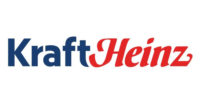Supply chain survey reveals contrasting digital transformation strategies for retailers, manufacturers
The survey found that both retailers (57%) and manufacturers (50%) include real-time product visibility as a top driver of investment.

A survey of supply chain executives reveals that trying to keep up with customer expectations is driving retailer investment, while agility and innovation are driving manufacturers’ investment in their supply chains.
The 2018 Digital Supply Chain Executive Survey conducted by Incisiv, West New York, N.J., for JDA Software, Inc., Scottsdale, Ariz., and KPMG LLP, the Netherlands, found that more than half identified the need for real-time product visibility as the leading driver in digital supply chain investment.
“As Amazon extends from retail into manufacturing and logistics, these industries recognize that the status quo for supply chains is no longer an option for success,” says Kevin Sterneckert, group vice president, innovation strategy and solution marketing at JDA. “The 2018 Digital Supply Chain Executive Survey outlines how retailers and manufacturers are leveraging innovative technologies and strategic alliances to improve speed to market and deliver a superior customer experience profitably.”
The survey found that both retailers (57%) and manufacturers (50%) include real-time product visibility as a top driver of investment. Retailers express the need for end-to-end traceability (53%) with the ability to manage new fulfillment nodes (50%), where manufacturers are driven by the need to innovate faster (40%), with lower cost to serve (33%) through improved planning.
Cognitive/predictive analytics is overwhelmingly viewed as the most disruptive technology by executives for its ability to impact all parts of the supply chain, including forecasting, fleet routing and inventory optimization, while manufacturers view blockchain and autonomous vehicles as the most disruptive technologies, with half of the companies surveyed planning to test these in the next 24 months.
“Companies that offer the best customer experiences, and service have raised the bar on expectations, and now many business-to-business companies are expecting the same service levels as today’s consumers,” says Brian Higgins, U.S. supply chain practice leader at KPMG. “How retailers and manufacturers are responding is a prevalent theme in our survey findings, and it should come as no surprise that companies are investing in innovative technologies to remain relevant.”
While retailers succeed based on exceeding customer expectations, many are held back because they lack a clear integrated strategy. The top inhibitors for retailers include lack of management commitment (70%), limited IT budget (60%) and no integrated strategy (30%). In sharp contrast to retailers, manufacturers have the financial resources, but are struggling with internal decision-makers, with 57% citing a resistance to change as a top impediment to investment in the supply chain.
“We are all fighting for customer relevance in this age of immediacy and rapid change, and a fast, transparent and nimble supply chain sits at the core of driving relevance,” says Gaurav Pant, chief insights officer at Incisiv. “Retailers and manufacturers need to focus on reducing friction from their customer experience, which requires embracing analytics and an attitude reboot on innovation.”
Survey methodology
Incisiv collected responses from 60 supply chain executives in the retail and manufacturing industries in February to determine the findings. Sixty-two percent of respondents are from companies that are worth more than $1 billion, and 75% of respondents decide or directly influence supply chain purchase decisions.
Looking for a reprint of this article?
From high-res PDFs to custom plaques, order your copy today!








